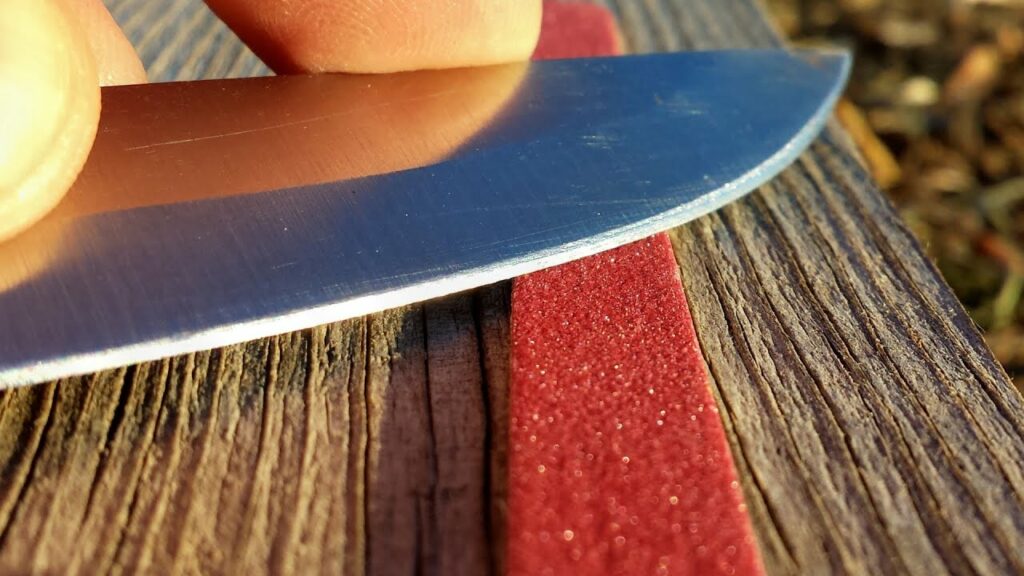A sharp and well-maintained knife is a valuable asset in the kitchen. Knives are one of the most used tools in any kitchen, so it’s important to take good care of them. This guide will help you keep your knives as sharp and safe as possible. While also making sure they look their best.
Cleaning
To keep your hollow edge knife in top condition, it is important to clean it after every use. The best way to do this is with a soapy cloth or sponge and warm water. Make sure to rinse the blade afterward. Do not submerge the entire knife in water as this can cause corrosion or rusting.
Sharpening
If your knife has become dull, it’s time to sharpen it. You can use either a sharpening stone or honing steel for this purpose. Make sure you understand how to use these tools and be careful not to press too hard on the blade when sharpening as this can damage the blade.
Storage
Proper storage is essential for your knife’s long-term health and safety. Always store your knives in a wooden block or sheath to protect the blades from damage. Keep them away from heat sources, such as ovens or stoves, and keep them out of reach of children or pets.
Honing your knife
Honing your knife on honing steel can help to keep the edge sharp and prolong its life. Start by placing the honing steel at an angle of around 20 degrees and draw the blade up the length of it, repeating several times. Make sure you are using even pressure on both sides and don’t press too hard. This is a good way of maintaining the sharpness of your knife without having to sharpen it.
Stropping your knife
Stropping is a way of aligning and polishing the blade edge. It can further increase the sharpness of your knife and make it easier to use. To stop your knife, you need a special leather strip or strop. Slip one end onto the handle of your knife and draw the blade across the strip at an angle of 20-30 degrees. Repeat this several times and make sure to use even pressure on both sides.
Testing your knife
Before using your hollow edge knife, it is important to test its sharpness. To do this, run your finger along the blade and make sure there are no nicks or burrs in the edge. You should also be able to feel a slight indentation when you press your fingertip against the blade. If you notice any rough edges or imperfections, you should sharpen or hone your knife before use.
Oil
To preserve the condition of your knife, it is a good idea to oil it. Apply a thin layer of mineral oil to the blade and handle using a clean cloth or paper towel. This will help protect against corrosion and rusting, keeping your knife in top shape for years to come.
Disinfecting
If you have used your knife to cut meat or other hazardous foods, it is important to disinfect it before storing it. Use a diluted bleach solution and scrub the blade and handle with a soapy cloth.
Rust removal
If you notice any rust spots on your knife, there are several ways to remove them. Squeeze some lemon juice onto a cloth and rub the rust spot. For tougher rust spots, use steel wool or a specialized cleaning product to remove it.
Polishing
To keep your knife looking its best you can use a polishing cloth to give it an extra shine. Using circular motions, rub the blade and handle with the cloth until the metal is shiny.
Inspecting
It’s important to check your hollow edge knife for any signs of wear or damage. Make sure to check the blade and handle for any nicks, burrs, or rust spots. If you notice anything unusual, have your knife inspected by a professional to ensure it is safe to use?
Safe usage
Always keep safety in mind when using knives and never cut yourself or others. Keep your fingers away from the blade and handle the knife when cutting. Make sure to use a proper cutting board or surface and keep your knives out of reach of children or pets.
Maintenance
Regular maintenance is key for keeping your knives in good condition. Wipe them down after each use, sharpen and hone them periodically, oil them regularly, and inspect them for any signs of damage. With proper care and maintenance, your kitchen knives should last for years to come.
Conclusion
By following these steps, you can ensure that your knife is always sharp and in good condition. Your knives are among the most important tools in any kitchen, so make sure you take proper care of them. Regular cleaning, sharpening, and storage will help keep your knife looking great for years to come. Taking the time to care for your knives is key to ensuring they last a long time. With proper maintenance and care, you can ensure that your knives remain safe and sharp for years to come.
You may also like
-
Unveiling the Top Picks: The Ultimate Guide to the Best Head Shavers in 2024
-
Aloo Posto in Bengali Homes: A Tradition
-
Choosing The Right Palette Insights into Professional Painting Contracts
-
Wear Your Imagination: Customized Text and Graphics T-shirt Printing in Sharjah
-
Camp Adventurer’s Kitchenette : Compact Culinary Haven

